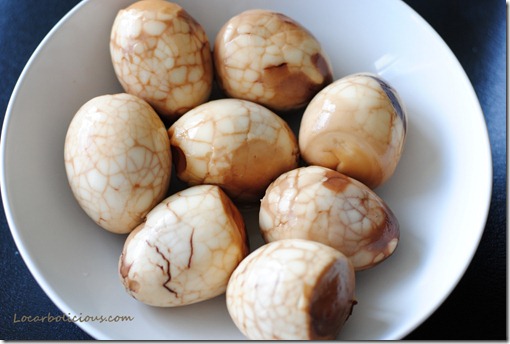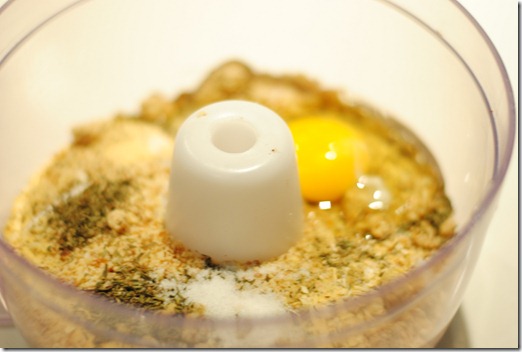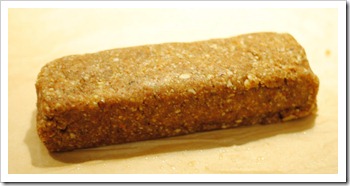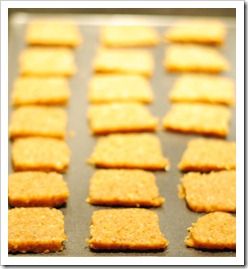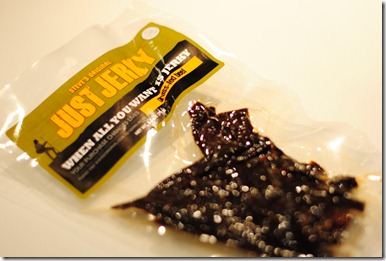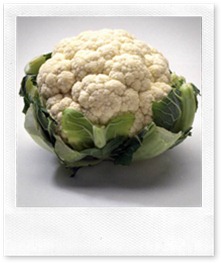Moved to AncestralChef.com
I have moved to blogging at AncestralChef.com.
Please follow me there for more delicious recipes!! If you haven’t seen my new FREE iPad e-book, then check it out on your iPad here. You can also reach me on Twitter, Facebook, Pinterest, or Google+.
I am also featured in the first issue of Paleo Living Magazine for iPad (full of videos, interactivity, and gorgeous pictures!), and you can download the first issue for FREE here.
Vegged Up Burgers
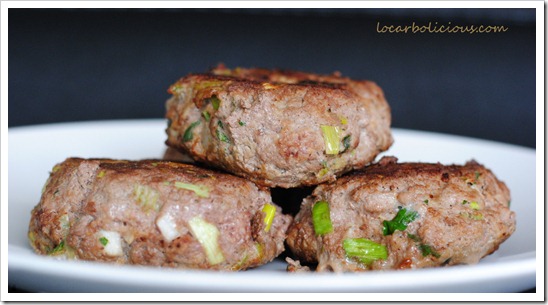
I love adding some vegetables to my burgers – it makes me eat more vegetables and adds great taste to the burgers! These are so simple to make as well regardless of whether you even have a grill. I often just pan fry them. They also store well in the fridge so I often cook a bunch of them and store them in the fridge. You can add in all sorts of vegetables into the patties – this time I added some leeks and parsley. I also added some salt and pepper and eggs to make the meat stick to the veggies well.
Ingredients: For 3lbs of meat, I used 2 leeks, a handful of parsley, and 3 eggs.
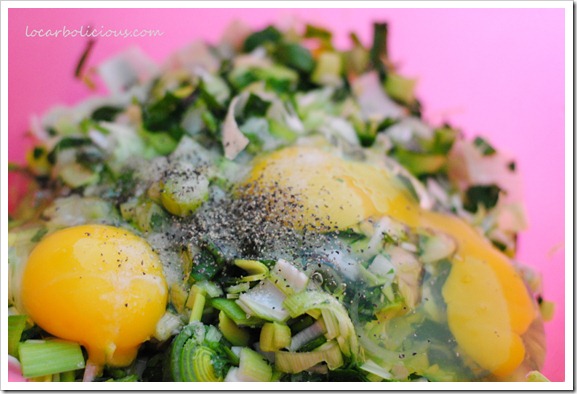
Directions: Mix everything together well and form the meat patties. Then simply grill or pan fry in some coconut oil. It’s that simple!
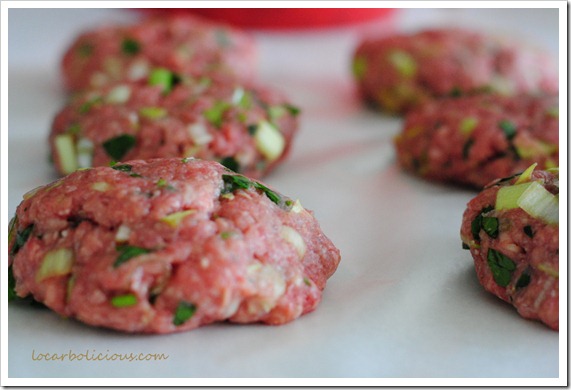
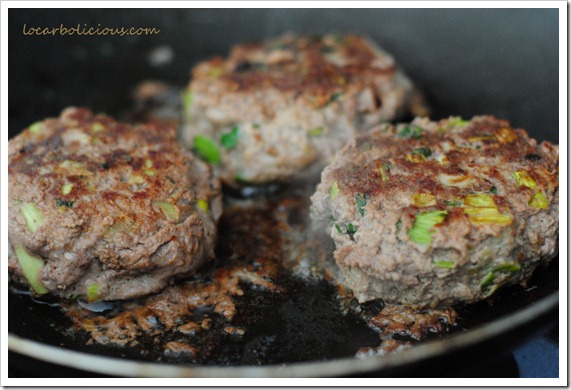
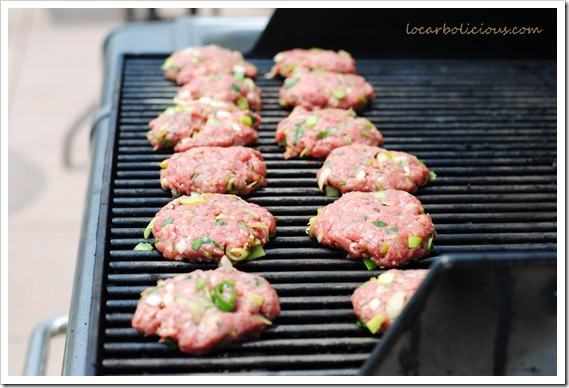
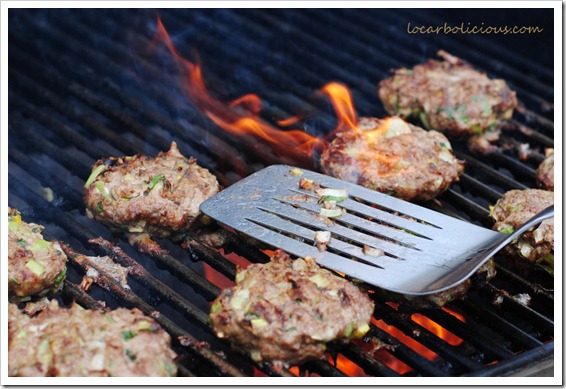
Caffeinated Eggs
Who has time to make coffee and cook eggs! Now, you can pre-make caffeinated eggs to make your breakfasts healthy as well as fast! This recipe is simple to make, delicious to eat, and handy to take with you on the go. 
It’s actually a traditional Asian recipe and the recipe itself can vary depending on who you ask. The crucial ingredients are: (1) the eggs (of course!), (2) soy sauce (or coconut aminos), and (3) tea. The spices also add quite a bit of flavor, but if you have those 3 crucial ingredients, then this will be a breeze!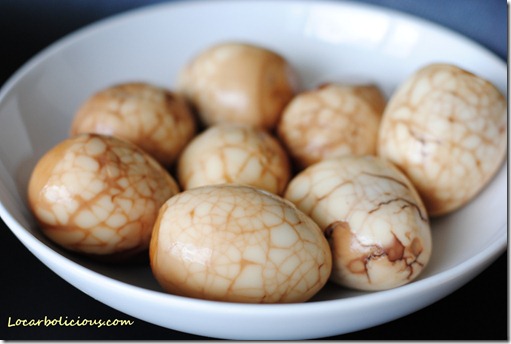
Ingredients:
Note: you can cook more eggs or fewer eggs in one go – the ingredients for the broth is the same. You can scale the broth up or down as long as the broth will cover all parts of all the eggs. My slow cooker is pretty big so I need a fair amount of broth to cover the eggs.
- 12 eggs
- 1.5 cups of soy sauce (or coconut aminos)
- 3 tablespoons of sea salt
- 4 cups of water
- 2 tablespoon of tea (I used loose green tea leaves as it was handy, but you can also use black tea). I think loose tea works best, but if teabags is all you have, then I would use around 6 bags (if it’s an American brand like Lipton) or 3 bags (if it’s actually from the UK).
- 6 star anise (optional, but highly recommended)
- 2 teaspoons of cinnamon or 1 cinnamon stick (optional)
- 1/2 teaspoon of ground cloves or 4 cloves (optional)
- 1/4 teaspoon of ground peppercorn (or better still, 1 teaspoon of whole szechuan peppercorns) (optional)
Directions:
- Place the eggs in a pot of cold water (choose a pot with a lid) and bring to the boil. Time 2 minutes starting when the water starts to boil. Then turn off the heat and put the lid on. Sit it there for around 10 minutes so that the eggs are hard boiled.
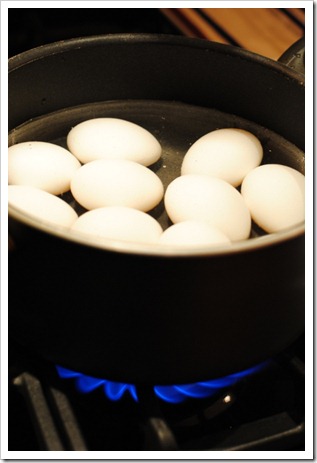
- While the eggs are cooking, prepare the the broth in a crockpot (slow cooker) or another pot with the other ingredients. Pour the soy sauce, water, salt, tea and optional ingredients into the pot and mix.
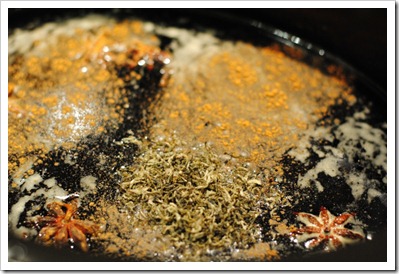
- When the eggs are done, sit the pot into the sink and run cold water into the pot for around 5 minutes – make sure the pot doesn’t block up the sink! This will cool the eggs.
- Once the eggs are cool, take a spoon and use the back of the spoon to break the shell. Make sure large parts of the shell doesn’t fall off, but it’s ok if a few small bits of shell come off. Break the shell all over. Do this for each egg. This will result in the eggs having that great marbling look.
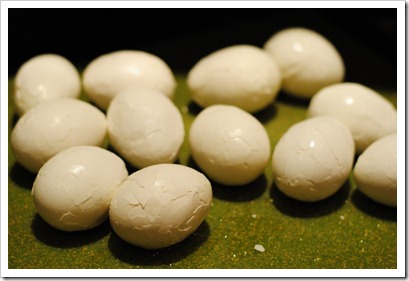
- Place the eggs (with the broken shell) into the pot with the broth. If you’re using the crockpot (slow cooker), then cook on a high heat for 4 hours. If you’re using a regular pot, then put the lid on and cook on the lowest heat on the stove for 2 hour (but check regularly to make sure the water isn’t boiling completely away – add more water if needed). You can shorten the cooking time, if you need to, but the eggs won’t be as flavorful.
- If you find the eggs are still not as flavorful as you’d like, then cool the entire pot down (don’t throw away the broth) and store the eggs overnight in the broth (in the refrigerator). This will help the broth seep into the eggs even more!
Marinated Grilled Flank Steak
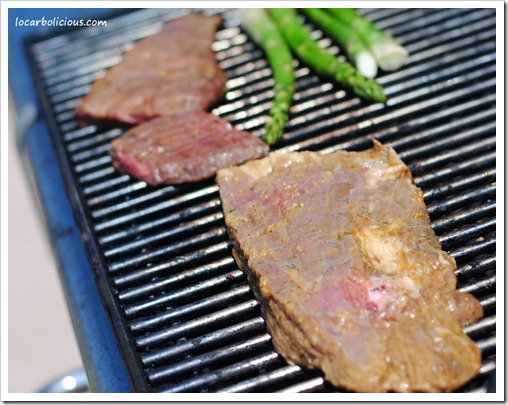
This is such a simple and delicious recipe and perfect for showing off your grilling skills without possessing any of those skills! It’s all in the marinade, and luckily, making the marinade just means dumping all the ingredients into a large bowl and stirring it. It’s also great because flank steak is such a cheap steak, so you can grill this all the time!
I made the marinade the night before and placed the flank steaks in the marinade overnight. There was so much flavor! I even reheated some left over steak in the microwave the next day, and it was still super tender and flavorful. So, here’s how to make it…
Marinade Recipe for Flank Steak
For 3 lbs of flank steak (usually two large pieces of flank steak that feeds at least 4 people):
- 1 cup coconut oil (or substitute with other oils)
- 2/3 cup soy sauce (or liquid aminos for a great gluten-free alternative)
- 1/2 cup red wine vinegar
- juice from 1 lemon
- 2 tablespoons of mustard
- 6 cloves of garlic, crushed
- 1 tablespoon of grated fresh ginger (I used a cheese grater)
- 1 tablespoon of paprika
- 1 tablespoon of dried chopped onion
- 1 tablespoon of salt
- 1 tablespoon of garlic powder
- 2 teaspoons of thyme
- 1 teaspoon of chili powder (it’s not spicy so feel free to add more chili powder if you like it really spicy)
How to Marinade Flank Steak
I sliced the 2 large flank steaks into halves so that it would be more manageable for marinating and cooking. I placed each of the 4 pieces of steak into a ziplock (sandwich) bag and poured some marinade into the bag. I carefully sealed the 4 ziplock bags and placed them into another plastic bag before putting them into the fridge overnight (I really didn’t want anything to leak into my fridge).
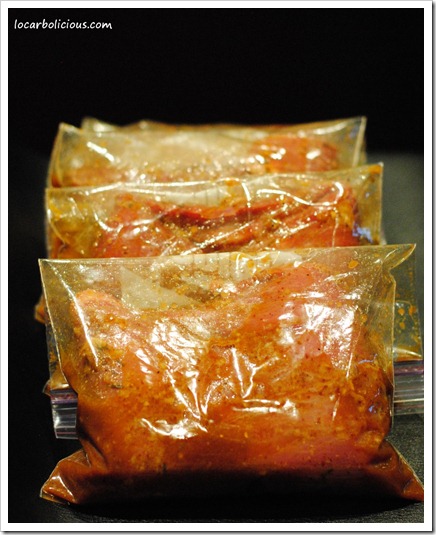
How to Grill Flank Steak
This part will vary a bit depending on the type of grill you’re using, how thick your piece of steak is, and how rare or cooked you like your steak. My apartment building has a nice gas grill on the roof, so I try to keep the grill temperature around 300-350F with the lid down. I like my steaks medium so I generally use tongs to see how soft the meat is getting. When the meat starts to feel less like the softness of raw meat and more firm, then it’s pretty much ready for me. This usually takes around 15 minutes. If you like your steaks rare, then cook it for less time, and if you like it well done, then keep it on the grill with the temperature under 350F for longer.
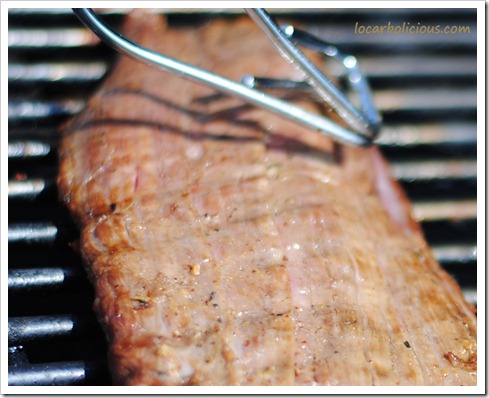
Cutting and Serving Flank Steak
Remember to cut against the grain (i.e. not parallel to the strings of meat fiber) if you’re slicing it up.

Or you can serve the steak whole with some grilled vegetables. The next photo shows approximately a 0.4 lb flank steak with some grilled asparagus. So, the marinade makes 8 pieces of steak that size.
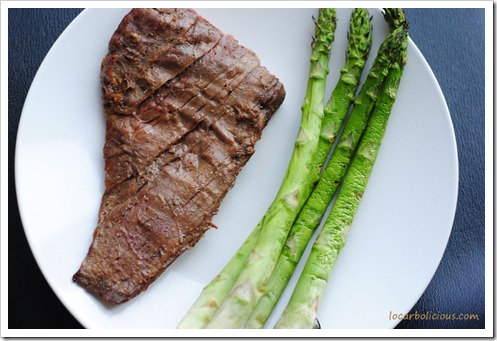
Exercising – Hard Core Push Ups
Why I became interested in “Military-Style”
Push-Ups:
I grew up playing badminton, first at home with my parents and then more often and competitively in both high school and college. I only ever received coaching and training at an older age, which meant that I wasn’t particularly good at badminton and also that my form wasn’t very good. Over time, my bad form led to me developing shoulder injuries, mainly tendinitis in the rotator cuff of my right shoulder.
I gave up playing a few years ago, but the pain and discomfort still linger in many activities. I’ve tried Active Release Therapy with my local chiropractor (after reading about it in Tim Ferriss’ book, “4 Hour Body”), and the therapy (along with a cortisone shot) has definitely helped calm down the injury. After a year of pretty much doing nothing with my shoulder, the pain has subsided, and I have almost normal range of motion. However, the pain still comes back if I do certain exercises.
In particular, push ups give me problems – and no wonder since normal push ups often injure rotator cuffs in people without prior shoulder injuries!
As an alternative, my chiropractor suggested that I try “military-style” push-ups, which I want to share with you so that more people don’t injure their shoulders while doing pushups. (In fact, my cross-fit instructor also suggested that everyone do these instead of normal push-ups.) These push-ups also have an added benefit – they’re harder than normal push-ups, mostly because they rely on your arm muscles more than your chest! In effect, you get less injury with more of a work out….
How to do Military Style Push Ups: I was going to write a very detailed explanation, but I found the video above (on YouTube), and it explains the movement about as well as I could hope to.
The key is to keep your elbows tucked in close to your side (rather than out at right angles to your body). Your hands are generally directly under your shoulders.
The first time I tried these push ups, I nearly collapsed from doing just 5, because I was so unused to working out that part of my arms, so don’t be afraid to start with your knees on the floor or even doing the push ups against a wall. Just remember to tuck your elbows into your side, and your rotator cuffs will thank you!
Crackers
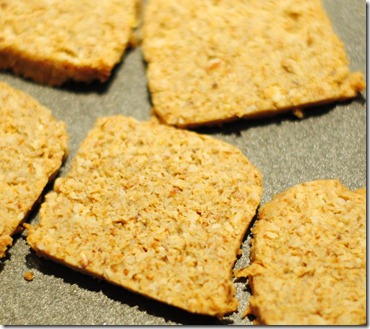 I saw a great recipe on Mark’s Daily Apple yesterday that I just had to try – crackers! You can dip them, spread cheese on them, or eat them by themselves. Of course, as Mark points out in his post, this is not something you should be eating for every meal just because it tastes so good, but it does make a great snack once in a while.
I saw a great recipe on Mark’s Daily Apple yesterday that I just had to try – crackers! You can dip them, spread cheese on them, or eat them by themselves. Of course, as Mark points out in his post, this is not something you should be eating for every meal just because it tastes so good, but it does make a great snack once in a while.
I’ve modified the recipe a little so that it’s not so crumbly, which makes it a bit easier to cut and cook. I substituted part of the almond meal for flax meal. This also adds some extra fiber to the cracker without really changing the taste or the texture. I’ve described the basic recipe below along with one option for seasoning, but you can change the seasoning to any spices that tickle your fancy.
Ingredients:
- 1 1/2 cups of almond flour (or almonds food-processed into small chunks)
- 1/2 cup of flax meal
- 1 egg
- 2 tablespoons of olive oil (I love the Columela Extra Virgin Olive Oil from Spain because it just has amazing flavor with everything!)
- seasoning: (3/4 teaspoon salt, 1/4 teaspoon basil. 1/2 teaspoon thyme, 1/4 teaspoon oregano, 1/2 teaspoon onion flakes, 1/4 teaspoon garlic powder)
Directions:
- Preheat oven to 350F (175C).
- Place all the ingredients into the food processor and food process well to make a dough.
- Shape dough into a log (as shown in the photo below) or roll into a flat sheet using tin foil or parchment paper.
- Place in fridge for 10 minutes to harden the dough.
- If you made it into a log, then cut into thin slices (1/3 of an inch). If you rolled it into and then cut into cracker shapes using a pizza cutter or knife).
- Place crackers onto baking tray and bake for 10-12 minutes.
- Let cool and store in the fridge over night (this hardens them even more).
Nutritional information (per cracker): 76 calories, 6.7g fat, 2.6g carb (1.7g fiber), 2.7g protein.
Review: Steve’s Original Grass-Fed Just Jerky
You might think that all dried beef would taste the same, but you’d be wrong. I’ve tried quite a few different jerkies now, and this is probably my favorite. (I say probably, because I also think Angelo’s Turkey Jerky is amazing.) The jerky in question is made by a company that specializes in Paleo food, but this grass-fed beef jerky is suitable for all low carb diets. In fact, it’s so good, you don’t need to be on a diet to enjoy it!
So, I rate jerky in 4 categories:
1) How soft is it? I hate jerky that I have to dislocate my jaw to enjoy, so a softer (but still chewy) jerky scores higher. This jerky is vacuum packed with a very small amount of marinade, which keeps the jerky slightly moister than most jerkies.
2) How flavorful is it? Although I like the taste of beef, it gets a bit boring, so I like my jerky to be full of other flavors! This jerky is marinated with sea salt, apple juice concentrate, paprika, pineapple juice concentrate, beef powder, black pepper, garlic powder, and ascorbic acid. Don’t be scared about the fruit juice ingredients because they’re in such small amounts that they add in negligible amounts of sugar or carbs per 2.5 oz (71g) serving. The marinade has a bit of a tangy sweet flavor to it. You can also taste the pepper along with a little bit of a kick from the paprika.
3) How carb-free and sugar-free is it? Some jerky taste really good because they’re marinated in a LOT of sugar! This one contains some fruit juices, but overall, its carb and sugar contents are both ZERO (for 1 serving).
4) Other advantages or disadvantages? On the plus-side, it’s made from grass-fed beef, which is slightly healthier and in my opinion, often tastes better than grain-fed beef. On the other hand, it’s a bit messy to eat, because it’s rather juicy and makes your fingers sticky.
Final Verdict: 9/10 (I have to save the top score in case something else even more amazing comes along!)
Where can you buy it? You can buy the grass-fed jerky I from Steve’s Original’s own website.
They sell 5 of the 2.5oz packs for $28.75 (i.e. $5.75 per pack). They also have a non-grass-fed jerky, which costs $23.75 for 5 2.5oz packs. Shipping is extra (shipping to New York is $6.62 for UPS Ground 2-7 days, and I expect it might be more to other states since they’re shipping from New Jersey). They also ship to some other countries.
Colorful Cauliflower
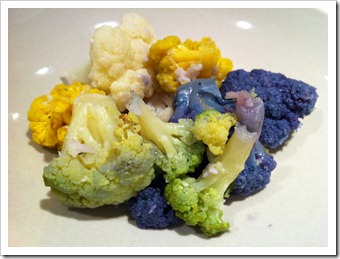 I grew up believing that broccoli was just the name for green cauliflower. I now know better, but it turns out that my childhood associations weren’t too far from the truth! Among the various types of cauliflower, there is actually a green variety that looks kind of like broccoli and even has a name similar to broccoli – broccoflower.
I grew up believing that broccoli was just the name for green cauliflower. I now know better, but it turns out that my childhood associations weren’t too far from the truth! Among the various types of cauliflower, there is actually a green variety that looks kind of like broccoli and even has a name similar to broccoli – broccoflower.
Why Cauliflower?
You’re probably wondering why I’ve dedicated a whole post to a simple large ball-like vegetable. The fact is that vegetables are a key part of a low carb diet, and cauliflower is a useful vegetable to know about. When you puree boiled cauliflower, it forms a thick creamy texture that’s great as a thickening agent for soups and sauces. You can also use the puree by itself to make mashed cauliflower (if you add some butter) or cauliflower soup (if you add some chicken broth). In many cases, cauliflower can easily take the place of potatoes in recipes. Additionally, if you throw cauliflower into the food processor, then it forms small grain-like balls that are great for creating faux rice dishes (with a consistency much like couscous). Download the free recipe ebook for mashed cauliflower, cauliflower soup, faux rice, and other recipes. There’s so much that you can cook with just the white cauliflower. But now you can spice up your foods in a new way with all the colorful cauliflowers described below. Just think how cool purple mashed cauliflower will be!
Types of Cauliflower
You probably didn’t know this, but there are a huge number of different cauliflowers (way too many to list). Click here to see the full list. However, one can generally boil it down to 4 different colors of cauliflower:
White: The most common cauliflower is, of course, the white cauliflower that we generally see in the supermarkets. It’s a very nutritious vegetable despite not being green! One cup of cauliflower contains over 75% of your daily recommended amount of vitamin C and over 15% of vitamin K, and studies have even suggested that substances in cauliflower may prevent cancer. Click here to read the news report.
Purple: This rather uncommon cauliflower has such a great color that it’s easy to think it was dyed rather than naturally occurring. Its vibrant color comes from anthocyanin, which is an antioxidant that also causes red cabbages and red onions to be the colors that they are. Some website state that purple cauliflowers are a type of broccoli and that they will turn green when cooked, which can be true (although I haven’t witnessed it yet). Many cauliflower varietals are intermixed with broccoli varietals, and so some purple varietals will turn green when cooked, but other varietals will not. The purple varietal I have pictured above definitely did not turn green when cooked!
Orange: Yes, the colors get even more unusual. The orange cauliflower contains beta-carotene, which is an inactive form of vitamin A, and which is found in other vegetables such as carrots and sweet potatoes. This type of cauliflower was discovered in Canada back in the ‘70s and has since been crossbred with white cauliflowers to create the type that we see today. It has a slightly sweeter and creamier taste than the white variety.
Green: And, finally, we get to broccoflower, which can either be a cauliflower/broccoli hybrid or a mutant type of cauliflower where the white florets produce chlorophyll, which is the same substance that makes other plants green.
Vote Now
Vote for your favorite type of cauliflower below.
